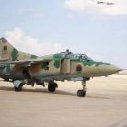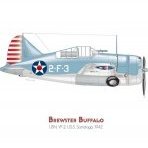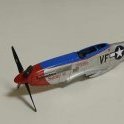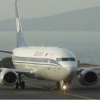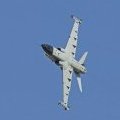-
Posts
8,609 -
Joined
-
Last visited
72modeler's Achievements

Completely Obsessed Member (6/9)
9.2k
Reputation
-
ccHoward, There is another possibility for finding suitable blisters for your project. If there is a craft store, like a Michael's, where you are, then you could look for "googly eyes" which are clear plastic bubbles that contain black discs for eyes that is used for stuffed animals; they come in several different sizes, and if you remove the back and the eyes, then you have a perfect bubble. I have used them on TBF's, B-25's,, B-24's, and B-17's for astrodomes. You might not be able to find ones as large as you need for your SC-54 project, but you could check. Plastic caps for markers that have a rounded edge might also work as a master to plunge mold new blisters if you can find one with the correct diameter, but rounding off the end of a suitably sized wood dowel would give you a master as well as a built-in rod to hold when doing a plunge mold. I have an initial release of the Revell C-54D kit, and I can check to see if it has both sets of window transparencies. Hope you can find/make what you need. Mike
-
The canopy sit? Wondering if it is an issue with the kit or mispositioning by the builder? Other than that...yowzah! Mike
-
Colin, See if the attached link helps; it is from a post by @Jamie @ Sovereign Hobbies Jamie at Sovereign Hobbies, and he is pretty careful with his color references, The man who really knows would be @Dana Bell, if he's not too busy. @Tailspin Turtle is also another expert USN aircraft authority. I am guessing that since the Martlet V's were all built by the Eastern Aircraft Division of General Motors, they would have had the interior colors as listed in the attached link. Hope this helps get you started. You could also do an internet search for Martlet V interior colors if you haven't already; IIRC IPMS Stockholm also did a pretty comprehensive article on WW2 US aircraft interior colors that you could look for. Mike https://www.sovereignhobbies.co.uk/pages/us-navy-usmc-aircraft-colours-around-ww2
-
Bill, IIRC, both the early B-26 and the P-61 used the same spinners, so you should be able to rob a P-61 kit for them; looking at early Marauder and P-61 photos, the spinners appear to be the same, or pretty darned close. The Valom kit does come with spinners, but that kit has a multitude of serious shape issues, and it would be a very expensive way of getting a pair of spinners. Maybe another kit maker will grace us with a state of the art early Marauder, as there are some very well-known aircraft and a nice variety of schemes, from Silver Fleet to OD to desert colors. Keeping my fingers crossed, but not holding my breath. (If ICM does an early B-26 in 1/48 scale, which they would be crazy not to, then maybe they would also do one in 1/72 eventually. I want to build 'Queenie" from the 22nd BG or 'Dominion Revenge" SOOO bad!} Mike
-
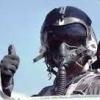
Lockheed Vega Model 5 Floatplane
72modeler replied to Courageous's topic in Ready for Inspection - Aircraft
Dayam, Stewart- it's not a Sabre....bur it''s gorgeous! Well done, mate! Mike- 12 replies
-
- 1
-

-

1/32 Trumpeter P-51B Mustang “ Shangri La”
72modeler replied to Tolga ULGUR's topic in Ready for Inspection - Aircraft
You really made a very nice model out of what I have read is a kit with a lot of problems, Very nice model in all respects and a wonderful tribute to a great combat pilot. Mike -
Now, this one I like! Great choice of schemes, Mac! Mike
- 17 replies
-
- 1
-

-

HobbyBoss F-105D Thunderchief
72modeler replied to Ben Hartmann's topic in Ready for Inspection - Aircraft
Yowzah-nice Thud and a very realistic diorama; reminds me of the one at the USAF Museum! Mike- 30 replies
-
- 1
-

-

Grumman Martlet/Wildcat Mk.V
72modeler replied to bigbadbadge's topic in Ready for Inspection - Aircraft
She's a beaut, Chris- and brush painted? Tony OT would be proud of you! Great to see you back in action., as well! Mike -
I discovered this footage just now, and I thought many of you would enjoy seeing it. Lots and lots of classic USN and USMC aircraft from the 50'sin a variety of colors and markings. The FJ-4's were especially nice. Those were golden years, for sure! Video via YouTube Mike
-

D.H. Vampire FB.5 - Special Hobby, 1/72
72modeler replied to Veron's topic in Ready for Inspection - Aircraft
What a wonderful scheme on a very nice model. Looks like the Special Hobby kit is a good one- how was it to build? Mike- 15 replies
-
- 1
-

-
- Vampire FB5
- Vampire
-
(and 1 more)
Tagged with:
-
It's finally finished! Glad to see all the research and work you put into this project paid off; she's a beaut and a faithful replica of the real one. Definitely not a scheme you see modeled, but you have pulled it off. Maybe Special Hobby will release the new-tool 1/72 Invaders they have had announced for eons, or better yet, ICM will downsize their 1/48 kits. The Italeri kits do have issues, like the nose contours on the A-26C transparency being too tapered, but as you have stated, it's the best ball game in town. Well done, my friend! Mike
- 24 replies
-
- 2
-

-

-
Might it be a pouch used to store the ejection seat safety pins after they have been removed from the seat? Just a guess. Might also be where the RBF lanyards are stored. Mike


.thumb.jpg.158e2e086d45b8f96b7d93b8bee8dc21.jpg)


